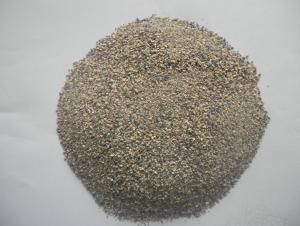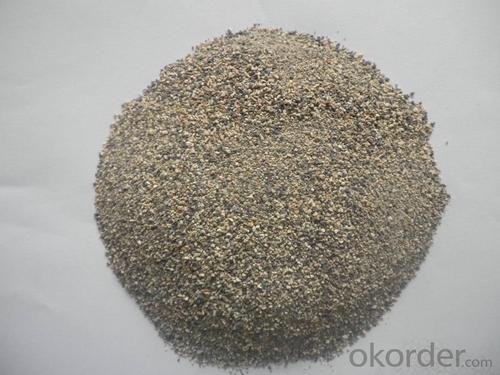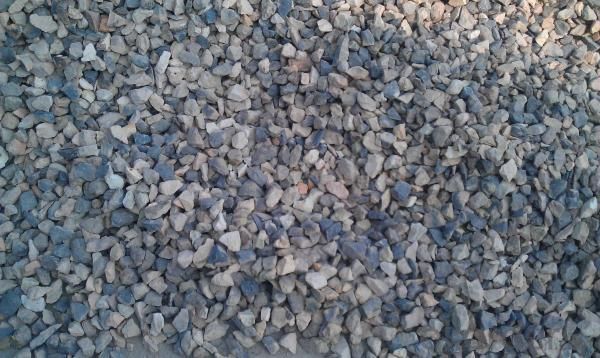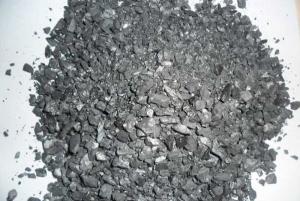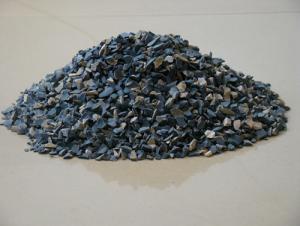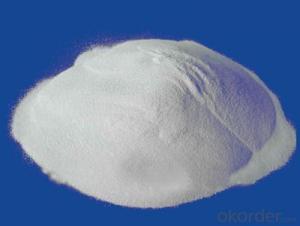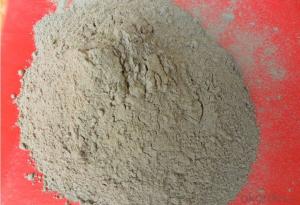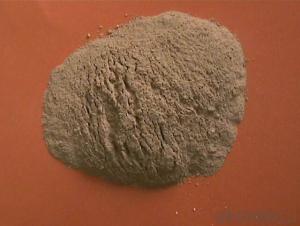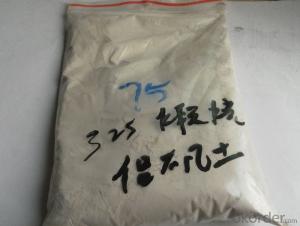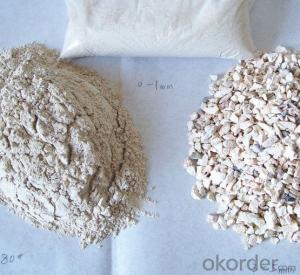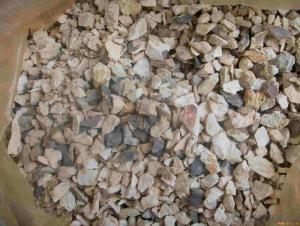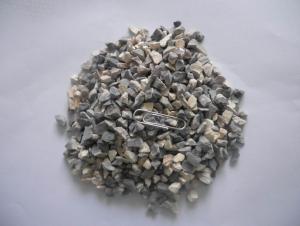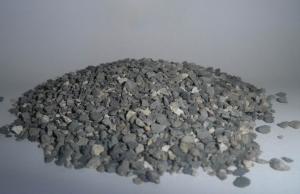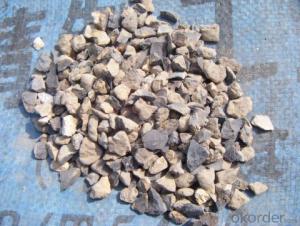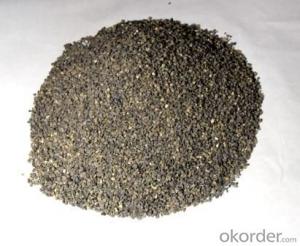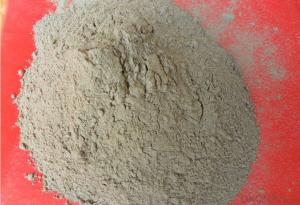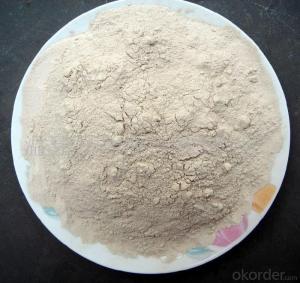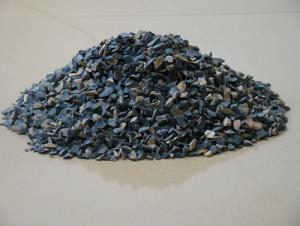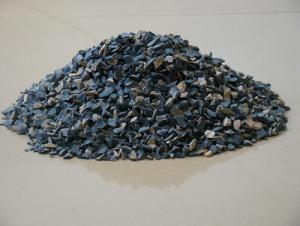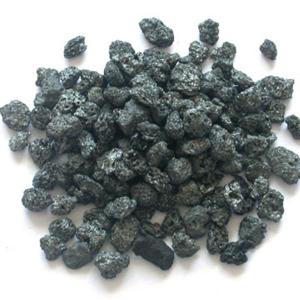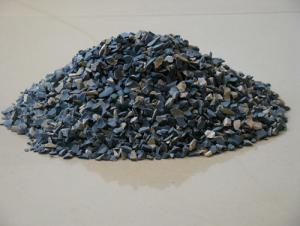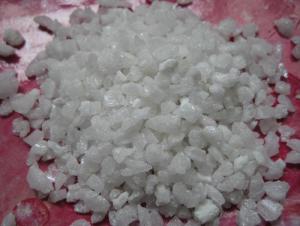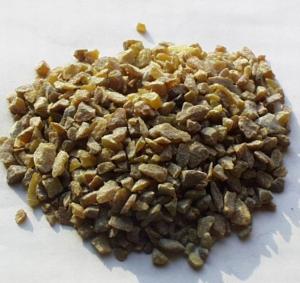Calcined Bauxite A - Raw Materials for Refractory
- Loading Port:
- China Main Port
- Payment Terms:
- TT or LC
- Min Order Qty:
- 1*20ft m.t.
- Supply Capability:
- 1000tons per year m.t./month
OKorder Service Pledge
OKorder Financial Service
You Might Also Like
Specifications of Calcined Bauxite A
Grade | AL2O3 | FE2O3 | TIO2 | K2O+Na2O | CaO+MgO | Bulk density |
75 | 75min | ≤3.0 | ≤4.0 | ≤0.3 | ≤0.5 | ≥2.70 |
80 | 80min | ≤3.0 | ≤4.0 | ≤0.3 | ≤0.5 | ≥2.80 |
85 | 85min | ≤2 | ≤4.0 | ≤0.3 | ≤0.5 | ≥3.00 |
86 | 86min | ≤2 | ≤4.0 | ≤0.3 | ≤0.5 | ≥3.10 |
87 | 87min | ≤2 | ≤4.0 | ≤0.3 | ≤0.5 | ≥3.20 |
88 | 88min | ≤1.8 | ≤4.0 | ≤0.25 | ≤0.5 | ≥3.25 |
90 | 90min | ≤1.8 | ≤4.0 | ≤0.25 | ≤0.5 | ≥3.30 |
Size: as customer’s requirement
Packing: packed in big bag, 1.25mt/bag; or pack as customer's requirement.
Introduction of Calcined Bauxite A
Calcined bauxite is one of the principal ore of aluminum. Calcined bauxite contains hydrous aluminum oxides and aluminum hydroxides, formed through the laterization of aluminous rocks in tropical and subtropical areas .calcined bauxite is obtained by calcining (heating)superior grade bauxite at high temperature (from 85OC to 1600C) .this removes moisture thereby increasing the alumina content. compared to an alumina content of about 57%to 58%in raw bauxite, calcined bauxite has an alumina content of 84%to88%.the heating is carried out in rotary kilns.
Applications of Calcined Bauxite A
calcined bauxite is typically classified according to its intended commercial application, such as abrasive ,cement ,chemical, metallurgical, and refractory .as raw material for use in high alumina and super duty refratory bricks and shapes ,plastics ,castable refratory, motors, gun mixes, ramming mixes, abrasive grains and other products.
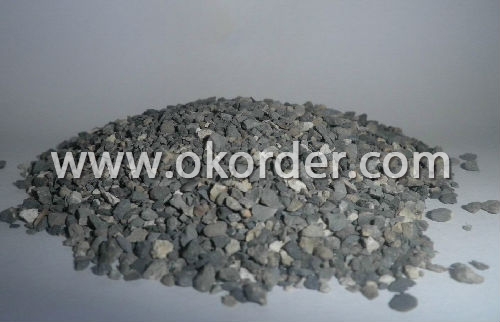
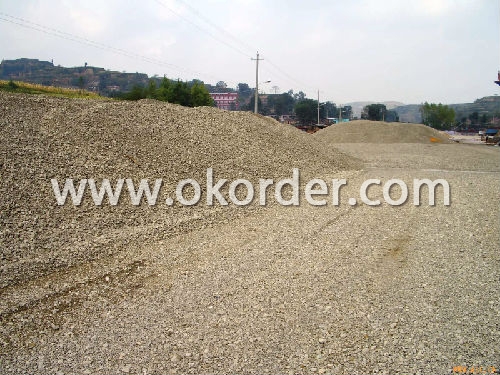
- Q: how to use boiler fireclay
- Boiler refractory, diluted with water to touch the places where needed, can be used after high temperature baking.
- Q: How can refractory material of the electric furnace be used for longer.
- Do not exceed the temperature, do not exceed the limits of use in order to achieve the best performance and the longest service life
- Q: Is fireclay corrosive?
- No. All of the refractory materials have stable chemical properties and their usability can be guaranteed under high temperatures.
- Q: Which industry does refractory belong to? Does it belong to construction industry?
- I do not recognize all the answers. No matter what kind of refractory can be used in construction. Biulding syove or kiln is construction. So personally, it belongs to construction indusrty.
- Q: Which kind of refractory floor is easy to use? ?
- Fireproof wood floor includes three types, and according to your requirement, I think that the third type is more suitable or is easier to use. Here are the three types, and you can choose form them. A. Wear-resistant composite solid wood floor It is also known as super durable multi-layer solid wood floor. Its surface is inorganic glass fiber material and special paper impregnation thermosetting amino?resin, composited with solid wood base materials like plywood or core-board. And also, its front is wear-resistant layer while the back is balance layer, then hot press it into grooved and tongued floor. This is a new impregnated paper laminate floor. It also has the same wear-resistant quality as laminate floor, comfort as solid wood floor, and stability as composite board. B. Fire-resistant wood-plastic composite decking board Wood-plastic composite decking board is not the wood floor in the traditional sense, but a composite material, also known as plastic wood. It is formed by high molecular improving and processing natural fiber, such as recycled plastic and wood fiber. It not only has the same advantages as plastic and wood, but alos has certain fire resistance, thus it is a environmentally friendly material with much development potential. C. Fireproof strengthened composite wood floor It is the so-called fireproof and fire retardant floor, fiber board, plywood and chipboard as its base materials. It is coated with fireproof coating and impregnated paper, and after fireproof and fire retardant technical process, it becomes a composite wood floor with some fire?retardant level. Its features are more partial to that of laminate floor with stable performance, steady structure and good durability.
- Q: I would like to know if there is any requirement for refractories in the crucible type high-frequency smelting furnace Worry! I hope you can help me! This time!
- Stable chemical properties. The crucible material should not be hydrolyzed at low temperature. It is difficult to be decomposed and reduced at high temperature and is not susceptible to corrosion by molten slag and molten metal;
- Q: What are the classifications of refractory? Which category does steel ladle castable belong to?
- Silmo brick, alumina-magnesia brick; 2. coke oven, aluminum silicate... 8 categories)& nbsp, teeming ladle, glass furnace ...... 7 categories) high alumina refractory products (blast furnace, electric furnace, cement kiln, magnesia, glass furnace; 3. high alumina refractory mortar (high alumina, glass kiln ...... 6 categories) special refractory products (magnesia-carbon bricks, aluminum-carbon bricks, MgO-C, shapeless refractory products& nbsp, light weight, sliding plate bricks, cement kilns: There are 26 categories in refractory products, clay, calcium silicate, ceramsite lightweight... 10 categories) & nbsp, air heating furnace, sheets; 1 refractory castable (alumina-magnesia, blocks, resistance furnace... 11 categories) alkaline refractory products (magnesia. First, thermal insulation refractory products (ceramic fiber; clay, diatomaceous earth, steel fibre reinforcement...14 categories) & nbsp, silicon carbide brick ...... 19 categories) Second, China is the largest refractory production country in the world, clay, non-water cannons mud, converter, siliceous, teeming ladle, profiled) siliceous refractory products (coke oven, dense shaped refractory products (all kinds of bricks, electric furnace roof, glass kiln ...... 5 categories) clay refractory products (blast furnace, high alumina ...... 4 categories) three
- Q: what's the detailed address of fireproof and thermal inuslation matertial market?
- following are the detailed address of fireproof and thermal inuslation matertial market: Central China Building decoration materials market,Hanxi 1 road No 95, Xinyongan Tangcai decoration material makert, Jianghan district Tangcai road No 53, Baoye decoration material wholesale market, Wuhan Wuchang district Minzhu road No 620.
- Q: What kinds of fireproof materials does the safe use?
- The fireproof materials of the safe, cement foam. It is often said recently that the safes with cement inside are bad. Actually, it is not like this. Chemical means are taken to make the cement inside safes rise like a leaven dough so as to achieve good insulation. The principle is the cement foam. Fireproof safes with such techniques have good performance in terms of fireproofing and anti-theft. The manufacturing processes of this fireproof safe are highly technical, some safes with poor techniques have problems in quality. Here are some data of the foam cement.
- Q: What is the the best ratio of mortar in refractory cement?
- Specifical proportions are as following: 42.5R cement is 425 rapid hardening cement. Using the 425 cement to compound the mortar. The reducion of cement will naturally impact the workability of the mortar. The mix design standard of the mortar specifies the minimum amount of cement is not less than 200kg / m3. If it is composite mortar, and the strength and workability can be ensured, it is Ok to use 425 to compound. You can look for instructions of mixing proportion of mortar online as a reference.
1. Manufacturer Overview
| Location | Tianjin,China |
| Year Established | 2006 |
| Annual Output Value | Below US$1 Million |
| Main Markets | Mid East;Western Europe;Japan;North America |
| Company Certifications | The Authentication certificate of Quality Management system |
2. Manufacturer Certificates
| a) Certification Name | |
| Range | |
| Reference | |
| Validity Period |
3. Manufacturer Capability
| a) Trade Capacity | |
| Nearest Port | Tianjin |
| Export Percentage | 61% - 70% |
| No.of Employees in Trade Department | 50 People |
| Language Spoken: | English;Chinese |
| b) Factory Information | |
| Factory Size: | Above 300,00 square meters |
| No. of Production Lines | Above 5 |
| Contract Manufacturing | Design Service Offered |
| Product Price Range | Average |
Send your message to us
Calcined Bauxite A - Raw Materials for Refractory
- Loading Port:
- China Main Port
- Payment Terms:
- TT or LC
- Min Order Qty:
- 1*20ft m.t.
- Supply Capability:
- 1000tons per year m.t./month
OKorder Service Pledge
OKorder Financial Service
Similar products
Hot products
Hot Searches
Related keywords
